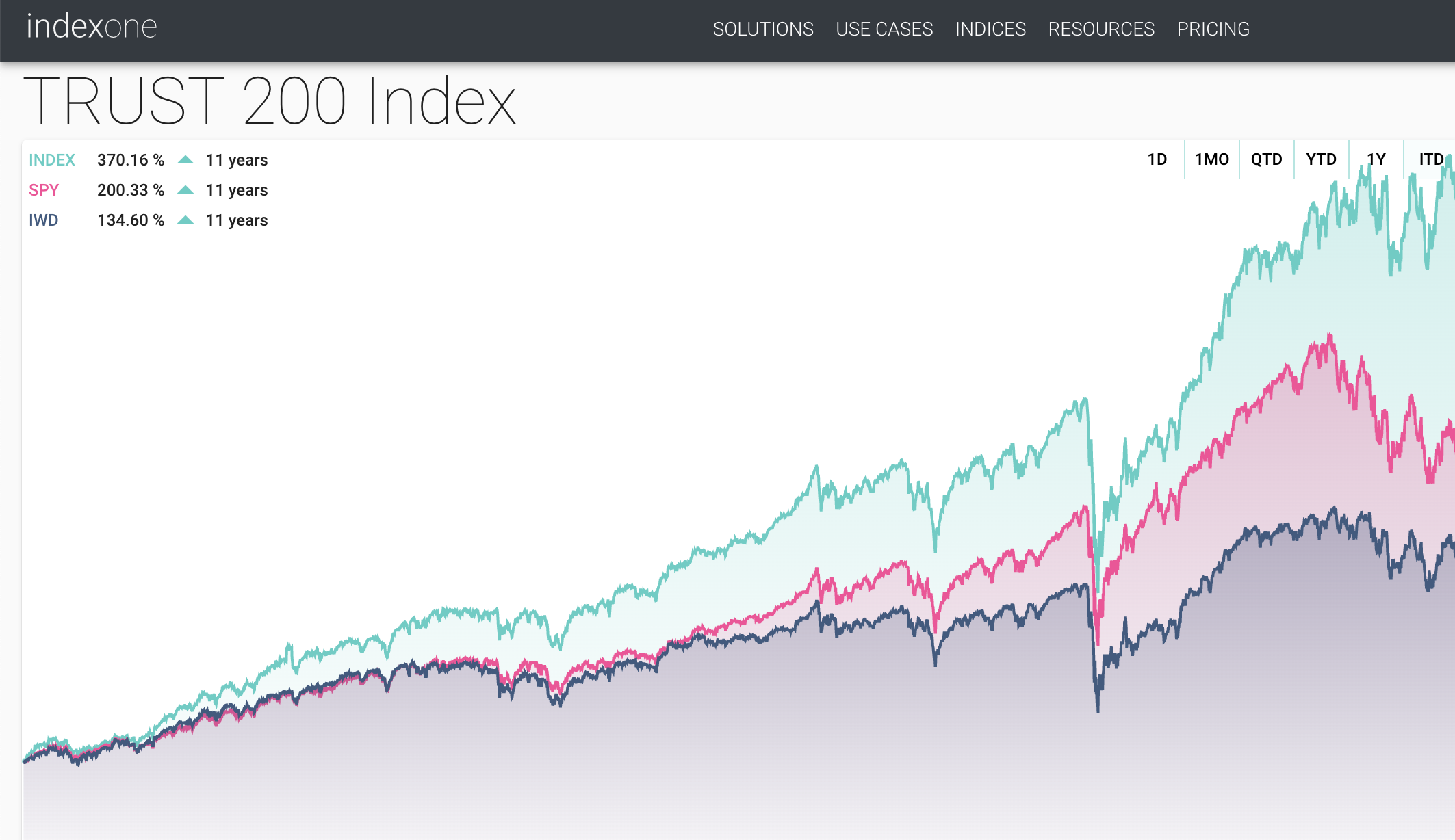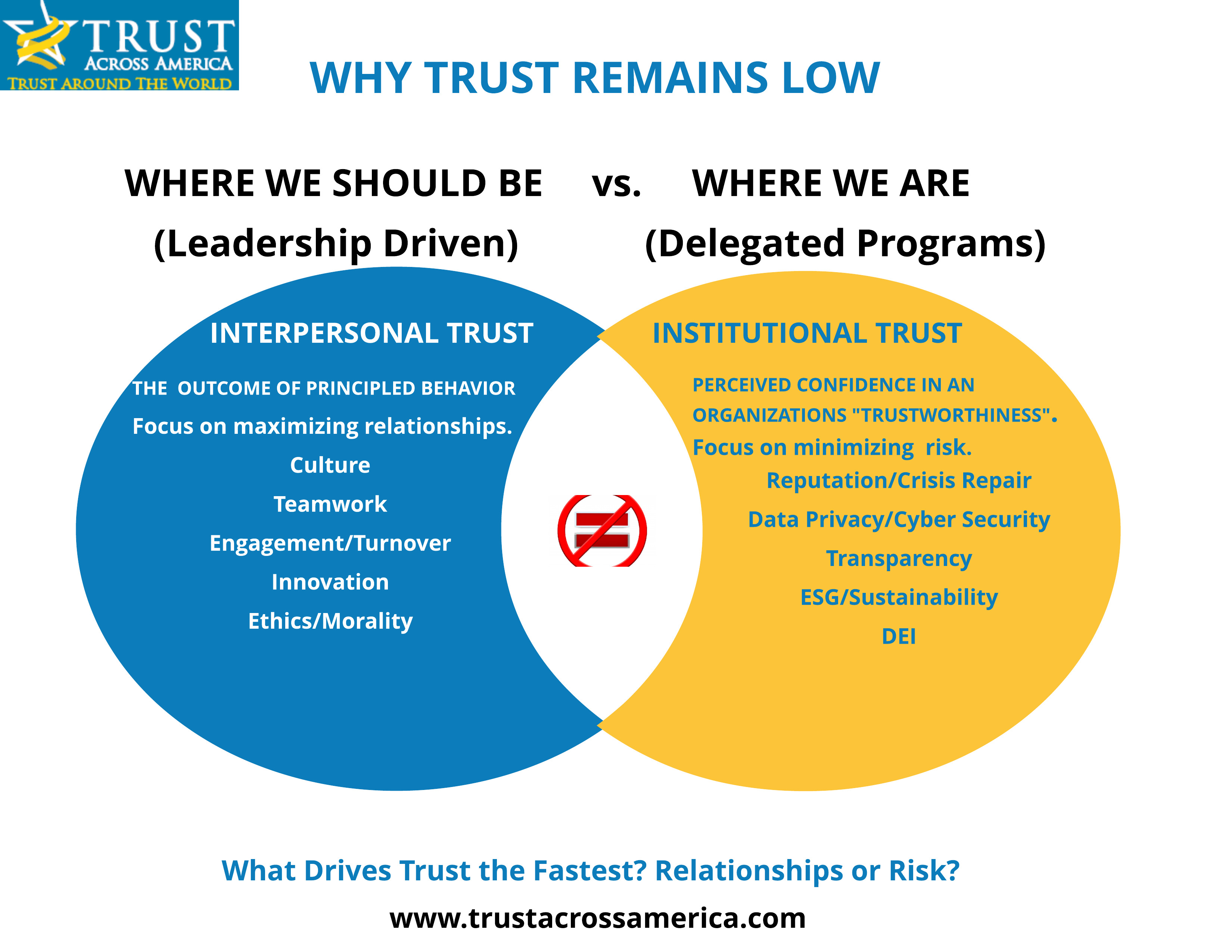What is the average lifespan of a public company?
“A recent study by McKinsey found that those companies listed in Standard & Poor’s 500 was 61 years in 1958. Today, it is less than 18 years. McKinsey believes that in 2027, 75% of the companies currently quoted on the S&P 500 will have disappeared.” While some might question this conclusion or argue that disruptive technology is primarily to blame, maybe lack of trustworthiness is the real culprit.
Every year Trust Across America-Trust Around the World creates a “Top 10” Most Trustworthy Public Company list. The 2022 list can be found here. Four of the companies were founded in the 1800s and all but one has been in business for more than 18 years. The average life span of the ten companies is 77 years. Could it be that the most trustworthy companies are not only great innovators, but also tend to stay in business because they are well governed?
Some of warning signs of poor governance and low trustworthiness may surprise you.
- Trust is taken for granted and viewed as a soft skill. Either leadership never discusses it, or worse yet attempts to delegate it.
- There is a new chief in town who holds the title of Chief Trust Officer but it is not the CEO (see #1 above) as it should be, and the job description is similar if not identical to the Chief Risk Officer. Trust building and risk mitigation skillsets are not one and the same and trust always starts at the top.
- The skillset of the “leadership” team needs a serious reset. For example, layoffs are a first line of defense.
- Employee turnover is high but no one is asking why.
- The company website contains lots of Kumbaya “words” that do not translate into action. Just ask the employees.
- Strategies for elevating organizational trust and trustworthiness have never been discussed let alone described, shared or agreed upon.
- Leadership focuses on survival and short-term profitability. In fact in many cases, compensation is directly tied to quarterly earnings.
- Board diversity in gender and race are present but sorely lacking is diversity of thought or opinions.
- A well defined/aligned hiring strategy has not been implemented resulting in cultural confusion and non engaged employees.
- Expensive Short-term “perception of trust” programs/workarounds are abundant. (Hint: Think about whether the program can easily tick a box.)
Take a look at this infographic for some additional insights.
Elevating trust and trustworthiness does not require complex formulas. Most of these warning signs can be easily addressed given the right tools and resources, and a willingness to fix what is broken. Want to learn more about building organizational trust and trustworthiness? Our website provides an endless number of tools and resources.
Barbara Brooks Kimmel is an author, speaker, product developer and global subject matter expert on trust and trustworthiness. Founder of Trust Across America-Trust Around the World she is author of the award-winning Trust Inc., Strategies for Building Your Company’s Most Valuable Asset, Trust Inc., 52 Weeks of Activities and Inspirations for Building Workplace Trust and Trust Inc., a Guide for Boards & C-Suites. She majored in International Affairs (Lafayette College), and has an MBA (Baruch- City University of NY). Her expertise on trust has been cited in Harvard Business Review, Investor’s Business Daily, Thomson Reuters, BBC Radio, The Conference Board, Global Finance Magazine, Bank Director and Forbes, among others.
Join our Constant Contact mailing list for updates on our progress.



Recent Comments